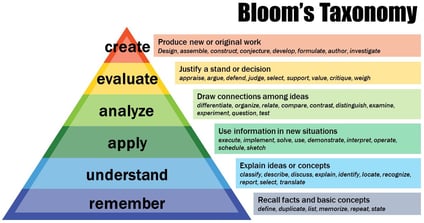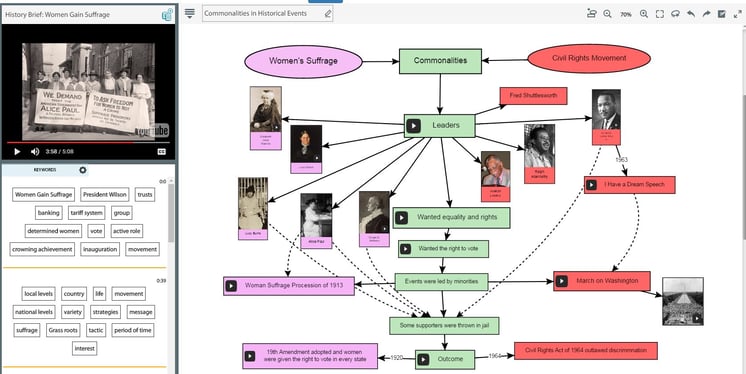Welcome back to school! Classrooms that were once empty a few weeks ago are now full classrooms with students, backpacks and assignments.
The month of August is significant for many reasons. It marks the beginning of school and the end of summer. It also marks many anniversaries throughout history: the formal signing of the Declaration of Independence in 1776, the 19th Amendment was officially adopted and gave women the right to vote in 1920, Japan surrendering to the United States ending WW II in 1945, Martin Luther King Jr. delivered his ‘I Have A Dream’ Speech in 1963, the Woodstock Festival began in 1969, the first compact disc was released in 1982 and the world wide web was introduced in 1991.
Throughout this school year, there will be opportunities to discuss both past and present events with your students. 
However, just memorizing the facts is the base level of Bloom’s Taxonomy. Students need to be guided toward an understanding of these events and then onto the creation of original works to reach the highest educational goal.
Ideaphora helps students interact with history in a new way. When students are creating a concept map in Ideaphora they learn to dissect events. They are: designing, assembling, constructing, developing, formulating, authoring and investigating—all measureable student outcomes established by Bloom’s Taxonomy in the highest level of expertise.
Creating In Your Classroom
Two of the events mentioned earlier in this post have been highlighted in the map below. These events were both significant in the history of the United States. One event marked the end of an exhausting struggle for the right to let women vote in every state. The other event was a defining moment in the American Civil Rights Movement for African Americans. The map links the commonalities between the two events.
Students can make connections and link ideas between any event in history or events happening right now. Here are some key questions that can help your students start to compare events in history:
- How are these events the same?
- How are these events different?
- What important actions were taken?
- Who were the leaders?
- What were the outcomes?
Ideaphora offers a digital library with hundreds of open education resources. Students search by keywords for information that they would like to use in their map. Multiple resources can be used in a single map.
What events will your students compare?

